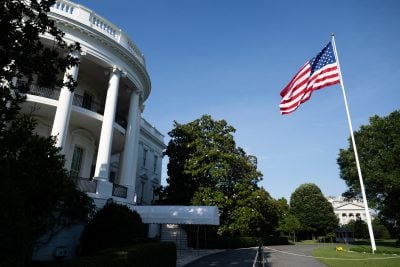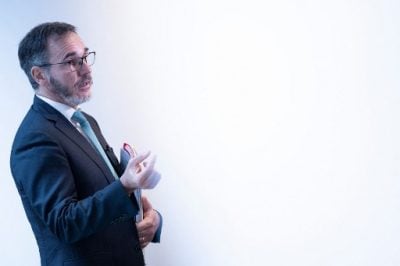Ana Lucía Coronel is an economist who does not mince her words. As the International Monetary Fund (IMF) lead on South Africa, she effectively serves as the independent watchdog of the country’s economic and financial governance.
Her team’s latest sojourn to the Rainbow Nation in a virtual staff visit, at the end of January, was as pointed as it was prescriptive. “Fiscal consolidation,” she said after discussions with South African officials, “needs to be accompanied by a decisive reform package that removes constraints to growth and job creation.”
She leaned heavily on the state’s electricity utility, Eskom, which has come under severe criticism: “Recurring power outages in the midst of a deep recession underscore the need for bold action to redefine Eskom’s business model so that it becomes self-sustaining. In the absence of fundamental reforms, Eskom’s problems will continue to weigh on public finances and constrain economic growth prospects.”
Yes, the South African economy, like others the world over, has been hit hard by the Covid-19 pandemic, with output contracting sharply in 2020 and unemployment rising to a staggering 30.8%.
In response, President Cyril Ramaphosa and his Minister of Finance Tito Mboweni had unveiled a R500bn ($34.43bn) social and economic relief package – about 10% of GDP and the largest intervention of its kind in the country’s history.
In his State of the Nation Address in parliament in Cape Town on 11 February, Ramaphosa to his credit did not hold back about the current position.
“Poverty is on the rise,” he said. “Inequality is deepening. In the third quarter of 2020, our economy was 6% smaller than it was in the last quarter of 2019. There were 1.7m fewer people employed in the third quarter of 2020 than there were in the first quarter, before the pandemic struck,” he lamented.
Whether intended or not, his speech omitted any reference to key policy challenges mentioned by the IMF’s Ms Coronel.
These include the bloated public sector wage negotiations of which the next round is due in April; reforming the country’s burdensome employment protection laws; and the contentious Expropriation Bill 2020, more commonly known as expropriation without compensation (EWC), which completed its public consultation at the end of February.
EWC, warns Hermann Pretorius of the Institute of Race Relations in Johannesburg, “will give the state an inordinate amount of power to seize the property of ordinary citizens without paying for it.”
But first things first. In a general atmosphere of doom and gloom and waning confidence, Ramaphosa invoked the spirit of Madiba’s legacy. “On this day 11 February, 31 years ago,” he recalled, “President Nelson Mandela walked out of the gates of Victor Verster Prison a free person, a living embodiment of the resilience and courage of the South African people.”
That resilience was reinforced by yet another metaphor, as he referred to the unique ecosystem found in the western Cape, based on the fynbos biome. This generates a huge diversity of flora, including the Protea, the national flower, with its pink and purple petals.
The South African spirit when the going gets tough was likened to the ecosystem’s hardiness under adversity, and ability to rejuvenate. The President confidently predicted: “As a result of the relief measures that we implemented and the phased reopening of the economy, we expect to see a strong recovery in employment by the end of 2021.”
Four arrows to support growth
But the country will need more than inspiring symbolism if it is to pull through this period. The IMF has identified several areas which need urgent and decisive policy responses.
“Reining in large fiscal deficits and debt will require containing the wage bill and avoiding ill-targeted subsidies and transfers to inefficient state-owned enterprises (SOEs). To reignite growth and job creation, there is a need to advance reforms that address Eskom and other SOEs’ difficulties, strengthen competition and governance, and increase labour market flexibility,” it maintained.
However, Pretoria’s focus is instead on what some have dubbed the “four arrows” priority interventions: a massive rollout of infrastructure throughout the country; a huge increase in local production; an employment stimulus to create jobs and support livelihoods; and the rapid expansion of energy generation capacity.
Ramaphosa revealed that his government has “now developed an infrastructure investment project pipeline worth R340bn in network industries such as energy, water, transport and telecommunications.”
Its long-term objectives however remain fragmented and will depend on finding sufficient funding against competing demands from other key sectors. In theory, infrastructure development is an ideal way of generating growth through job creation and revenues, and local supply chain production and services; in practise, implementation is a stiff cliff to climb.
Nevertheless, Ramaphosa’s key policy objective of building new infrastructure and carrying out maintenance on existing work should be commended. After some 27 years of democracy, the country’s general infrastructure remains of first-world quality.
Under the R100bn Infrastructure Investment Plan, several projects have recently been launched. They include two major human settlements projects that will provide homes to almost 68,000 households in the Gauteng province.
The Plan identifies projects worth R19bn covering arterial roads of the South African national road network. The Plan has also embarked on the Student Housing Programme, which aims to provide 300,000 student beds. Another approved project is SA Connect, a programme to roll out broadband to schools, hospitals, police stations and other government facilities.
Auto industry revives
There is also good news on the auto industry front. By the end of 2020, the sector, says Ramaphosa, had recovered around 70% of its normal annual production, in difficult circumstances. In February, Ford Motor Company announced a R16bn investment to expand its manufacturing facility in Tshwane for next-generation Ford Ranger pick-up trucks.
“This investment,” he said, “will support the growth of around 12 small and medium enterprises in automotive component manufacturing.
“Nearly half of the procurement spend on construction of the bulk earthworks and top structure at the Tshwane Special Economic Zone during this phase is expected to be allocated for SMMEs, an amount equal to R1.7 billion in procurement opportunities.”
Toyota has similarly invested in its KwaZulu-Natal facility to start production of the first generation of hybrid electric vehicles to come off a South African assembly line. This follows recent investment announcements by Nissan, Mercedes-Benz and Isuzu in expanded production facilities, all of which cement South Africa’s position as a global player in auto manufacturing.
The above inflow suggests that South Africa, as the IMF contends, “has sustained efforts to promote a business-friendly and competitive environment”. What it also needs to do is to “accelerate governance reforms; and inject firm-level flexibility into collective bargaining while simplifying employment protection legislation.”
Healthy FDI inflow
On the FDI front, there have been further encouraging developments. “Even under difficult economic circumstances,” explained Ramaphosa, “the South Africa Investment Conference last November managed to raise some R108bn in additional investment commitments.
“Together with investment confirmed from the two previous investment conferences, we have now received R773bn in investment commitments towards our 5-year target of R1.2 trillion. Firms have reported that some R183bn of these investments has already flowed into projects that benefit the South African economy. This shows that our country is still an attractive investment destination for both local and offshore companies.”
In contrast, SOEs remain a major drain on resources. The focus is on Eskom but its restructuring remains painfully drawn-out, perhaps more to do with the depth of mismanagement by the previous board and executive. Successfully “restoring Eskom to operational and financial health” is fundamental to economic recovery as energy demand will increase, assuming recovery comes.
There is a strong case for greater diversification of the energy mix to include renewable forms, reducing dependence on coal – and for greater involvement of Independent Power Producers.
“We encourage the government to make transfers to SOEs conditional on meeting ambitious but realistic performance targets; rationalise compensation; dismantle ill-targeted subsidies; and improve enforcement of tax compliance. This would reduce sovereign borrowing needs while preserving fiscal space for well-targeted outlays for infrastructure, health, education, and social protection,” explained Ms Coronel.
On a positive note, the Fund commends finance minister Mboweni’s monetary policy, “which has played an important role in ensuring adequate liquidity conditions and safeguarding financial sector stability during the pandemic, while paying due attention to the central bank inflation mandate. With short-term real interest rates in negative territory, the monetary policy stance remains appropriately accommodative.”
The South African Reserve Bank’s regulation and the strength of the banking sector underlines strong financial sector stability. “The banking system’s buffers remain strong at the aggregate level, but continued close supervision is warranted, including with respect to asset quality developments during the pandemic,” concluded the Fund.
Want to continue reading? Subscribe today.
You've read all your free articles for this month! Subscribe now to enjoy full access to our content.
Digital Monthly
£8.00 / month
Receive full unlimited access to our articles, opinions, podcasts and more.
Digital Yearly
£70.00 / year
Our best value offer - save £26 and gain access to all of our digital content for an entire year!
 Sign in with Google
Sign in with Google 



